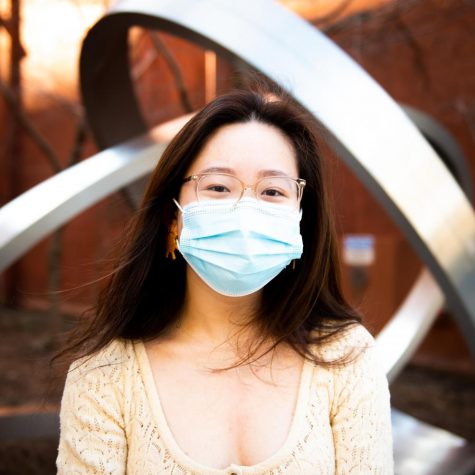Just days ago, NYU announced its annual admittance of the “most selective class” in its history. The acceptance rate for the Class of 2024 fell to 15%, more than halving its 31% acceptance rate for the Class of 2019. The median SAT score for the incoming class is 1500, up from its 1440 median for the Class of 2022.
Though NYU extended admission offers to 13,000 prospective students, a large portion of these students will not be coming to Washington Square Park this fall — not due to a lack of interest in NYU, but because NYU will not give them the resources they need to attend.
It’s no secret that NYU is expensive. Though NYU’s cost of attendance is on-par with other private universities, its infamously poor financial aid has caused NYU to gain the reputation of one of the most expensive universities in the United States. On average, one year at NYU costs $76,612, but according to a study conducted by the College Board, the university only meets 71% of financial need on average. From concerned parents and students on College Confidential warning other applicants about NYU’s lack of financial aid to memes about NYU’s unsupportive Office of the Bursar, this reputation has become as much of a pillar of NYU’s culture as Washington Square Park.
NYU’s lackluster financial aid is unique considering its global standing. Most top colleges in the U.S. at least try to make their university affordable to all students. Similarly ranked universities offer much better financial aid plans. Notably, some universities, such as Brown and Amherst College, promise to meet 100% of demonstrated financial need without having students take out loans. Other universities, such as Georgetown, UCLA and Caltech, promise to meet 100% of demonstrated need with loans. Most importantly, these universities all have smaller endowments compared to NYU’s $4.3 billion. These universities have promised to help more students while having less resources.
Furthermore, international students at NYU are not eligible for federal financial aid, federal student loans or most forms of institutional aid, meaning many of these students are paying the full cost to attend the school. The fact that NYU refuses to support any of these students is shocking, especially considering both its prideful boast of having the largest international student body in the U.S. and how other universities, such as the University of Pennsylvania, have promised to meet 100% of demonstrated financial aid entirely with institutional grants for international students.
Both NYU’s lack of sufficient financial aid and its increasing selectivity can be contextualized through its unique history. Unlike other prestigious universities, NYU is a relatively new school that did not have the added benefit of serving the old-money elites and captains of industry throughout its tenure. For most of NYU’s history, the university was a modest regional commuter school with a fairly limited research profile. It was only through an ambitious, reputation-building campaign beginning in the 1970s that NYU transformed from a commuter school to a well-known safety school. Beginning in 1984, under President John Brademas, NYU sought to transform from a safety school into a well-acclaimed institution. In the words of Joel Conarroe, president of the John Simon Guggenheim Memorial Foundation, which evaluates faculty at colleges nationwide, NYU sought to “gain admittance early in the next century to that small, charmed circle of exceptionally distinguished institutions.”
Now in the “early next century,” NYU continues to climb in ranking and increase its selectivity, as evidenced by its dwindling acceptance rate, increasing median SAT score and continued expansion into the world through its 14 other campuses. Despite this transformation, NYU’s financial aid office remains stagnant. If the university and the student body keeps rapidly changing, why aren’t the systems serving us changing at all?
It’s simple: NYU has instead opted, time and time again, to extend its considerable wealth to other ventures, such as awarding its president with one of the highest salaries in the nation and subsidizing luxury vacation homes for its administrators and professors.
NYU is no longer in the financial distress it faced in the 1970s. It is no longer a commuter school. With its rising prestige, NYU has a greater responsibility to make it possible for all students, regardless of their income, to become a part of it. Perhaps, instead of doling out faculty kickbacks and egregious administrative salaries, NYU should improve its financial aid packages so that the university will be able to become the top institution that it so desperately wants to be.
Opinions expressed on the editorial pages are not necessarily those of WSN, and our publication of opinions is not an endorsement of them.
A version of this article appeared in the Monday, April 6, 2020 print edition. Email Emily Dai at [email protected].

























































































































































Andrew • Apr 7, 2020 at 2:32 pm
“Most importantly, these universities all have smaller endowments compared to NYU’s $4.3 billion. These universities have promised to help more students while having less resources.”
These statements fail to appreciate the implications of NYU’s large student body for what its endowment can fund. The ability to fund financial aid *per student* is based on endowment *per student.* On that basis (see https://www.collegeraptor.com/college-rankings/details/EndowmentPerStudent), NYU ranks 190th at $89,889. By way of comparison, the private colleges and universities cited are: Caltech (7, $1,301,836), Amherst (11, $1,223,642), Penn (28, $622,090), Brown (50, $386,928), and Georgetown (142, $129,637). It is not reasonable to expect NYU to offer the same financial assistance to each student as rival schools with to 1.4 to 14.5 times as much endowment per student.
Dan Greenspan • Apr 6, 2020 at 11:59 am
For much of its history NYU was not a commuter school, but its Washington square campus was. NYU had its major campus at University Heights in the Bronx. That’s where the administration, president, and main library of the University were, as were all its sports teams. In the early 70s NYU faced bankruptcy and had to sell its main campus in the Bronx. NYU has been trying to turn Washington Square into something resembling a regular college campus ever since. That has been a very expensive proposition. Exacerbating the financial impact of this transformation, many alumni who had attended the Heights campus were disaffected and were lost as donors to NYU. That has impacted NYU finances. It was about the same time that the Heights campus was sold that Bobst library opened at the square. Imagine the Washington Square campus without Bobst, without Kimmel, without the Global Center for Academic and Spiritual Life, with nothing above 10th street and nothing east of Broadway. That’s what the Washington Square campus was like. In short, NYU has undergone, and is still undergoing a much greater transformative process than have most other universities. That has been an enormous cash drain. It’s alumni have been less than generous, with only 11% contributing financially after graduation. This is a much lower level than other quality private universities. This has also affected finances. Also, although NYU has a $4.3 billion endowment, it has more than 26,000 undergraduates. That’s huge, and means that NYU has less endowment money per student than do most other quality private universities (certainly a lot less than the ones you’ve cited in your article. UCLA, which you cite, is a public school that has added cash flow from the state). So, in simple math terms, NYU just has less money to spend per student. As for the salaries that NYU spends on it’s administrators and faculty, probably a lot of students who might complain about that might be much more understanding if their favorite sports team laid out big salaries for star quarterbacks, receivers or fast forwards. Part of the transformative process towards quality at NYU has meant that it has had to recruit start academics away from other institutions, and retain them. That means competitive salaries and, yes, perks.
Is the main premise of your article that NYU needs better financial aid to compete for and retain the best students correct? It’s spot on. An inability to match financial aid offers from other schools is NYU’s achilles heel. However, this inability is the result of a unique history and basic math. It is not the result of the machinations of an avaricious faculty or administration. If more NYU alumni contributed to their alma mater, it would certainly help.